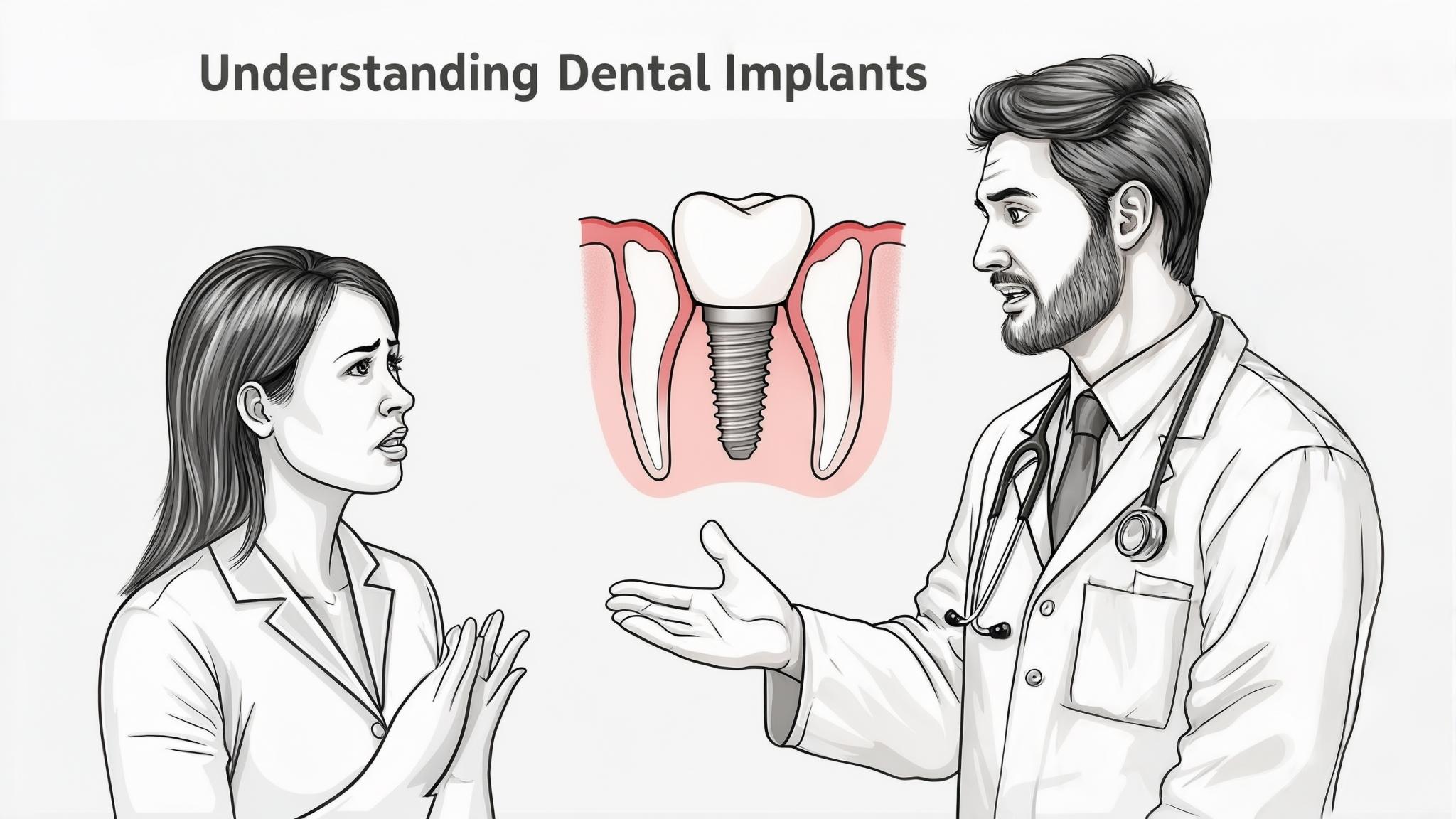What are Dental Implants?
Dental implants are a popular solution for replacing missing teeth, offering a durable and natural-looking alternative to dentures or bridges. Dental implants typically consist of three main components:
- Implant Post: This is a small titanium screw that is surgically placed into the jawbone, serving as the root of the new tooth.
- Abutment: A connector piece that is attached to the implant post, allowing the crown to be securely placed.
- Crown: The visible part of the implant that looks and functions like a natural tooth.
The Procedure for Placing Dental Implants
- Initial Consultation: Your dentist assesses your oral health, takes X-rays, and discusses your suitability for implants.
- Surgical Placement: The implant post is surgically inserted into the jawbone under local anesthesia.
- Healing and Osseointegration: Over several months, the jawbone grows around the implant, stabilizing it in a process called osseointegration.
- Final Restoration: Once healed, the abutment and crown are attached, completing the process.
Common Risks and Complications
Infection
Infections can occur if bacteria enter the surgical site, often due to poor oral hygiene or compromised healing. Symptoms include swelling, pain, and fever. Prompt treatment is crucial to prevent further complications.
Nerve Damage
Nerve damage can result from the implant being too close to a nerve, potentially causing numbness, tingling, or pain in the lips, gums, or chin. While often temporary, some cases may require further intervention.
Sinus Issues
For implants in the upper jaw, a sinus lift may be necessary. However, there's a risk of sinus perforation, leading to discomfort or sinus infections.
Implant Failure
Implant failure can occur if the implant does not properly integrate with the bone. Factors include insufficient bone density, excessive stress on the implant, or poor oral hygiene. Signs of failure include mobility of the implant and persistent pain.
Aesthetic Complications
Misalignment or improper fit of the implant can affect your smile's appearance and facial symmetry. This underscores the importance of precise planning and execution by skilled professionals.
Factors Contributing to Risks
Patient-related Factors
- Pre-existing Health Conditions: Conditions like diabetes or osteoporosis can affect healing.
- Smoking: Smoking impairs blood flow, slowing healing and increasing infection risk.
Surgical Factors
- Skill and Experience of the Surgeon: A qualified surgeon minimizes risks through expertise and precision.
- Quality of the Implant and Materials Used: High-quality materials reduce the likelihood of complications.
Post-operative Care
- Follow-up Appointments: Regular check-ups ensure proper healing and timely intervention if issues arise.
- Oral Hygiene Practices: Maintaining good oral hygiene is critical to prevent infections.
How to Avoid Risks and Complications
Selecting a Qualified Dental Professional
Choose a dentist with the right credentials and experience. Look for patient reviews and testimonials to gauge their reputation.
Pre-surgical Evaluation
Comprehensive health assessments and imaging help tailor the procedure to your specific needs, reducing risks.
Following Pre-operative Instructions
Adhere to dietary restrictions and medication management to prepare your body for surgery.
Post-operative Care and Maintenance
Maintain excellent oral hygiene and attend regular dental check-ups to ensure the longevity of your implants.
Conclusion
Understanding the potential risks and complications of dental implants is crucial for making informed decisions. While dental implants are generally safe and effective, being aware of the potential challenges helps you prepare and take preventive measures. Always consult with a dental professional to receive personalized advice tailored to your specific needs.

